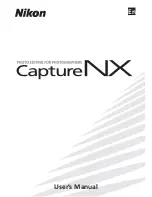
250
ExtremeWare 7.2e Installation and User Guide
IP Multicast Routing
NOTE
You should configure IP unicast routing before you configure IP multicast routing.
PIM Sparse Mode (PIM-SM) Overview
Protocol independent Multicast-Sparse Mode (PIM-SM) routes multicast packets to multicast groups.
The sparse mode protocol is designed for installations where the multicast groups are scattered over a
large area such as a wide area network (WAN). PIM-SM is a router-to-router protocol, so all routers and
switches must upgrade to the same PIM-SM version. Summit 400 switches use PIM-SM version 2 to
forward IP packets that are destined to the IP addresses in the Class D Range to multiple networks
using the Multicast Routing information setup.
PIM-SM is an explicit join and prune protocol that is a mixture of the shared tree and shortest path tree
(SPT) models. The routers must explicitly join the group(s) in which they are interested in becoming a
member, which is beneficial for large networks that have group members who are sparsely distributed.
PIM-SM is not dependant on a specific unicast routing protocol. The Summit 400 supports IGMP, which
allows network hosts to report the multicast group membership to the switch.
Using PIM-SM, the source router sends a join message to a known rendezvous point (RP). The RP is a
central multicast router that is responsible for receiving and distributing multicast packets. RPs are
elected by a bootstrap router (BSR). The job of the BSR is to broadcast bootstrap messages, disseminate
RP information, and to elect the RP. You may only configure the Summit 200 switches as an RP in static
mode, which means that all switches in your network must be configured with the same RP address for
the same group (range). Summit 400 switches are not eligible to be BSRs.
When a source router has a multicast packet to distribute, it encapsulates the packet in a unicast
message and sends it to the RP. The RP decapsulates the multicast packet and distributes it among all
member routers.
When a router determines that the multicast rate has exceeded a configured threshold, that router can
send an explicit join to the originating router. Once this occurs, the receiving router gets the multicast
directly from the sending router, and bypasses the RP.
Configuring PIM-SM
You can configure two active and 254 passive interfaces on a Summit 400 for PIM-SM. By default the
interface is configured as active. To enable the interface as passive, specify the
passive
keyword; to
enable the interface as active, omit the
passive
keyword. The following command enables PIM-SM on
an IP interface.
configure pim add {vlan} [<vlan name>]
The following command disables PIM-SM on an IP interface:
configure pim delete vlan [<vlan name> | all]
For example, to add a VLAN named lobby, as an active interface, you would enter:
configure pim add vlan lobby
To configure an RP and its associated groups statically, enter the following command:
Summary of Contents for ExtremeWare 7.2e
Page 14: ...14 ExtremeWare 7 2 0 Software User Guide Contents...
Page 18: ...18 ExtremeWare 7 2e Installation and User Guide Preface...
Page 80: ...80 ExtremeWare 7 2e Installation and User Guide Accessing the Switch...
Page 102: ...102 ExtremeWare 7 2e Installation and User Guide Virtual LANs VLANs...
Page 108: ...108 ExtremeWare 7 2e Installation and User Guide Forwarding Database FDB...
Page 180: ...180 ExtremeWare 7 2e Installation and User Guide Security...
Page 194: ...194 ExtremeWare 7 2e Installation and User Guide Ethernet Automatic Protection Switching...
Page 218: ...218 ExtremeWare 7 2e Installation and User Guide Spanning Tree Protocol STP...
Page 248: ...248 ExtremeWare 7 2e Installation and User Guide Interior Gateway Protocols...
Page 256: ...256 ExtremeWare 7 2e Installation and User Guide IP Multicast Routing...
Page 308: ...308 ExtremeWare 7 2e Installation and User Guide Using ExtremeWare Vista on the Summit 400...
Page 316: ...316 ExtremeWare 7 2e Installation and User Guide Technical Specifications...
Page 324: ...324 ExtremeWare 7 2e Installation and User Guide Software Upgrade and Boot Options...
















































